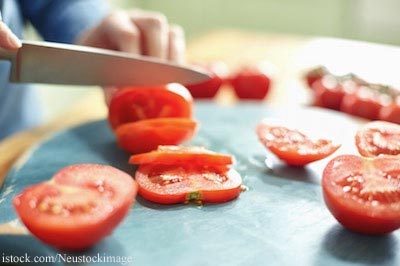A new study published in the Journal Infection Control and Hospital Epidemiology found that kitchen cutting boards can become contaminated with antibiotic-resistant bacteria from raw meat. Researchers at the University Hospital in Basel, Switzerland looked at 154 cutting boards before they were washed from the hospital and 44 from private homes after they were used to prepare pork, beef, veal, lamb, game, or fish. In addition, kitchen gloves worn during meat preparation were tested.
 The scientists discovered that 6.5% of the hospital cutting boards and 3.5% of the household cutting boards used to prepare poultry tested positive for “multidrug-resistant E. coli bacteria.” None of the boards used for meat other than poultry dated positive. Fifty percent of the gloves were contaminated with multidrug-resistant E. coli.
The scientists discovered that 6.5% of the hospital cutting boards and 3.5% of the household cutting boards used to prepare poultry tested positive for “multidrug-resistant E. coli bacteria.” None of the boards used for meat other than poultry dated positive. Fifty percent of the gloves were contaminated with multidrug-resistant E. coli.
The study proves that kitchen equipment and hands can easily become contaminated with pathogenic bacteria after handling raw poultry. The study’s lead author, Dr. Andreas Widmer said, “our findings emphasize the importance of hand hygiene, not only after handling raw poultry, but also after contact with cutting boards used in poultry preparation.”
It is critical that cutting boards are thoroughly cleaned and disinfected after they are used to prepare raw meat. [Editor’s note: I always use a pyrex plate to cut raw chicken and other raw meats instead of a cutting board used to prepare fruits and vegetables. The plate immediately goes into the dishwasher; I don’t even rinse it off in the sink because that would contaminate the sink.]




